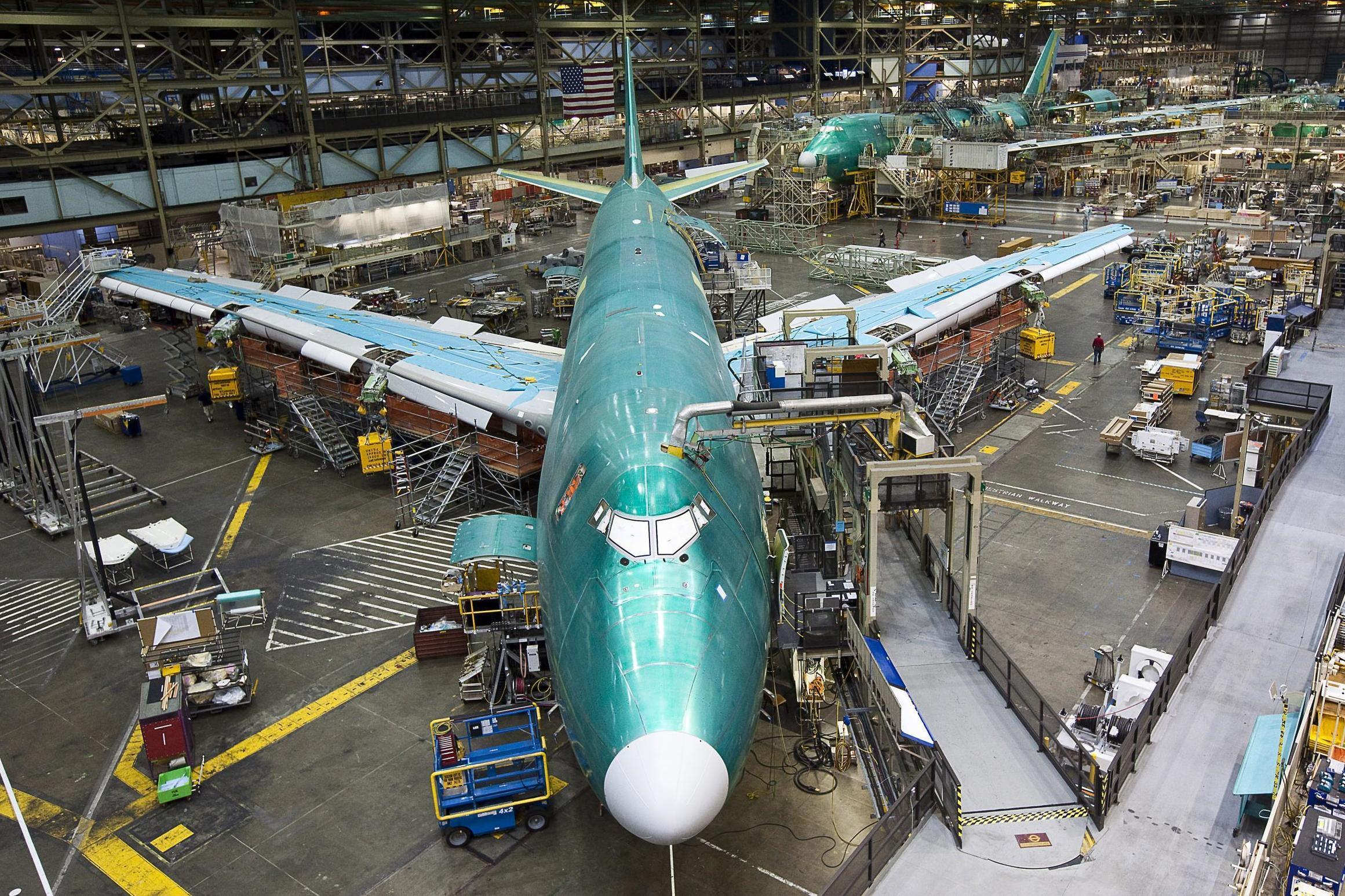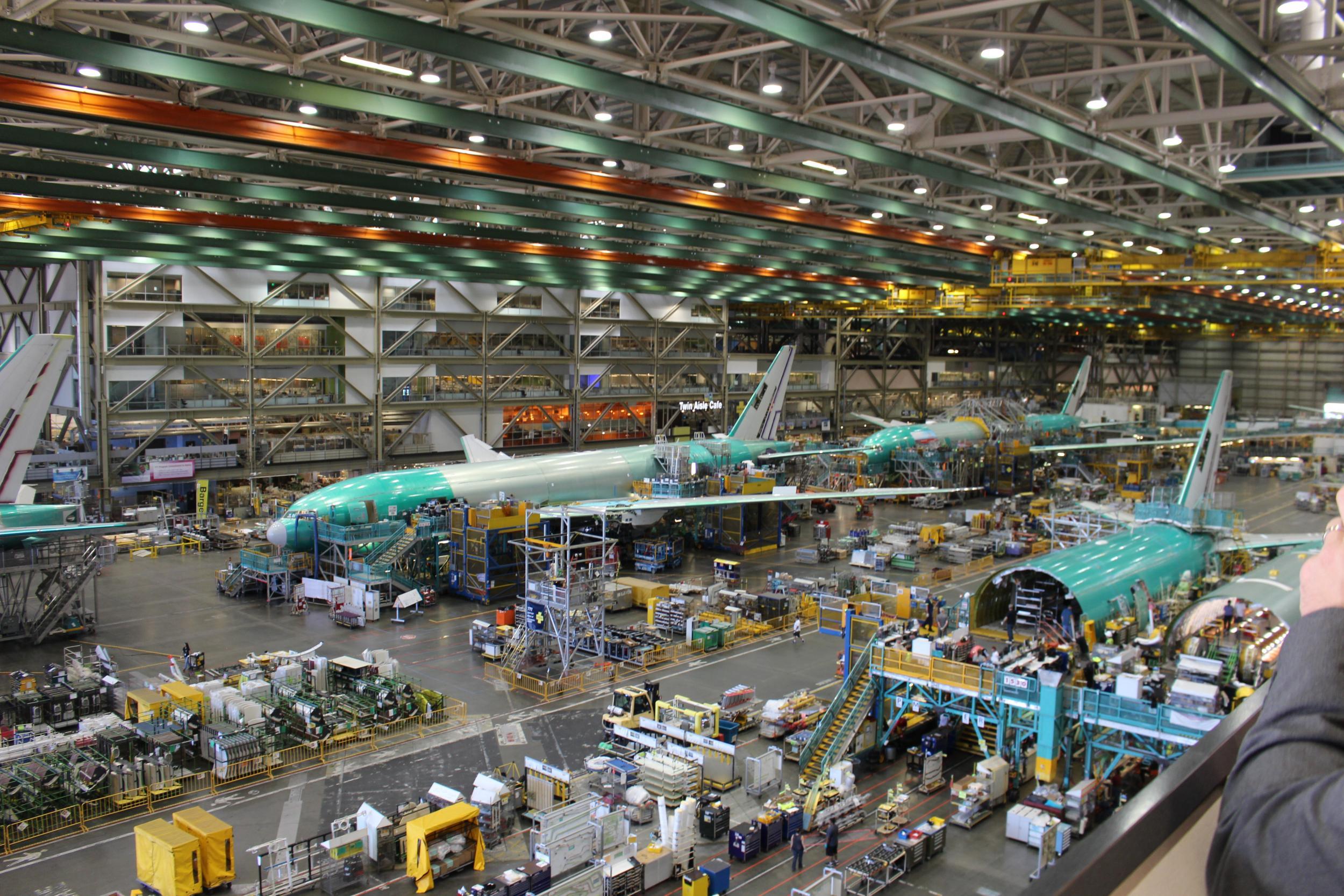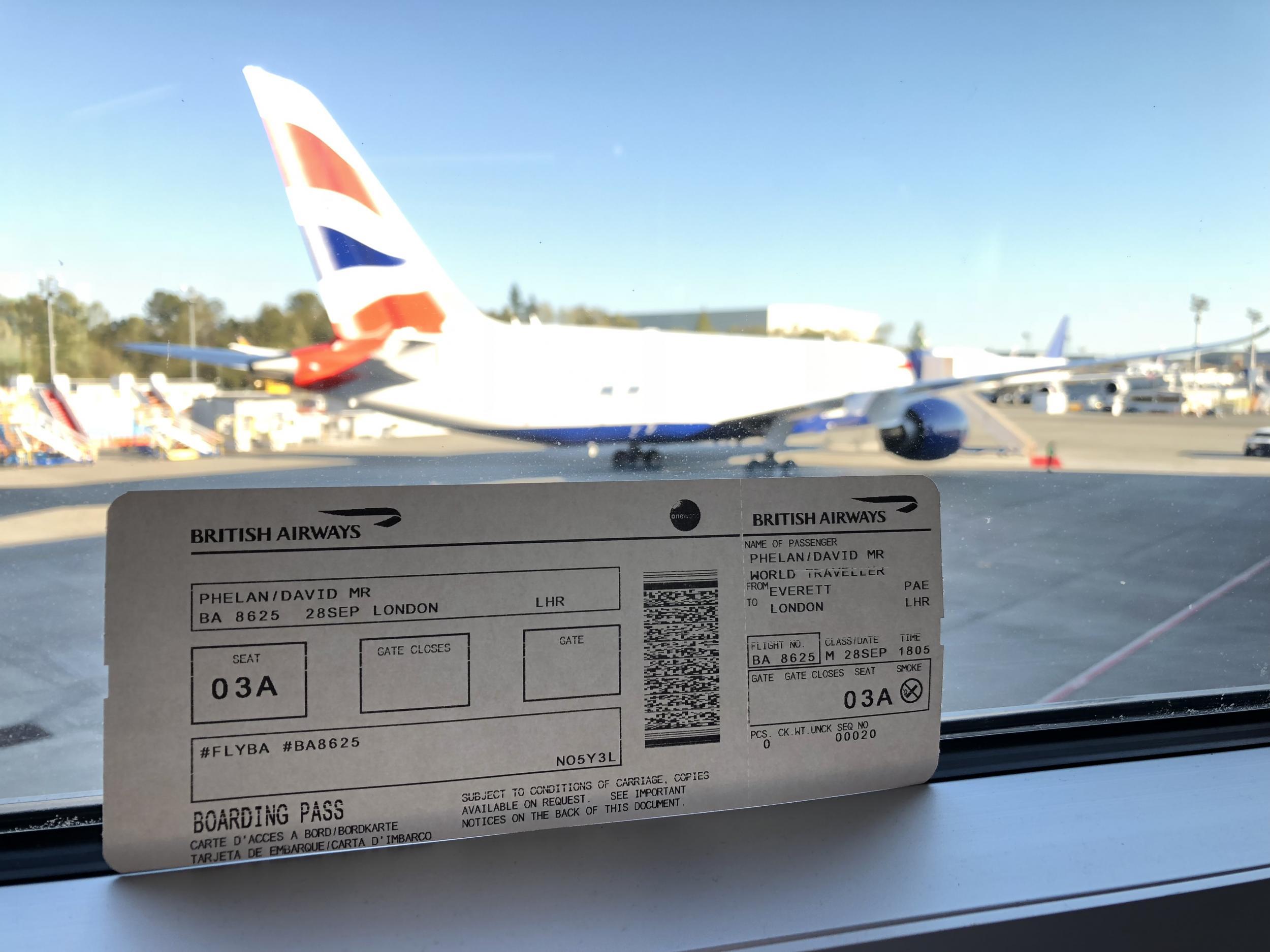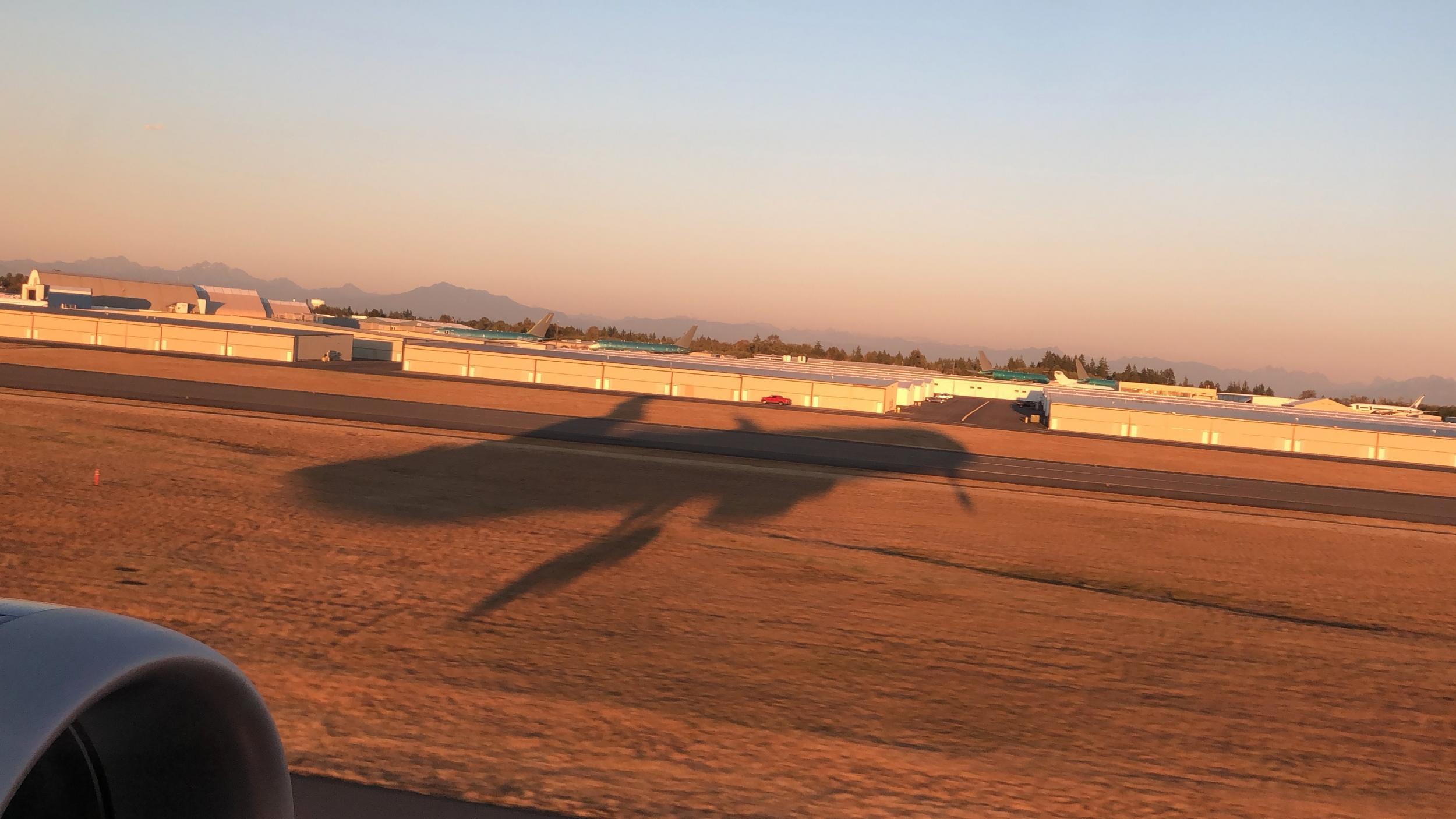Inside the world's largest building where passenger planes are made
The building is a series of hangars around a mile in length

Your support helps us to tell the story
From reproductive rights to climate change to Big Tech, The Independent is on the ground when the story is developing. Whether it's investigating the financials of Elon Musk's pro-Trump PAC or producing our latest documentary, 'The A Word', which shines a light on the American women fighting for reproductive rights, we know how important it is to parse out the facts from the messaging.
At such a critical moment in US history, we need reporters on the ground. Your donation allows us to keep sending journalists to speak to both sides of the story.
The Independent is trusted by Americans across the entire political spectrum. And unlike many other quality news outlets, we choose not to lock Americans out of our reporting and analysis with paywalls. We believe quality journalism should be available to everyone, paid for by those who can afford it.
Your support makes all the difference.“Welcome to the largest building in the world,” the guide says as we trundle around the Boeing factory in a chain of buggies. The building is a series of hangars around a mile in length, and houses aeroplane parts from screws and rivets up to, well, whole aircraft – three jets stand in various stages of completion as I glance to my right.
Boeing makes four planes here, the 747, 767, 777 and 787, also called the Dreamliner, which is the one I’ve come to see. Today’s the day that British Airways takes delivery of its twenty-fifth Dreamliner, which means that once its written the cheque for it, the company can fly it home.
BA has a large fleet: 273 craft in all, and also has orders for Airbus A350s, the newest plane in the sky, due to arrive soon.
Boeing’s factory is near Seattle in Washington state, but also on the lot with the massive hangar is, conveniently, a full-size runway, so we can fly to London from here.
The factory production line at Boeing is staggeringly big, with remarkable and unexpected details, like the huge weights suspended from the wings being attached to the 777 nearby, to compensate for the engines which will eventually be slung into place.
These are the engines with the distinctive saw-tooth rear profile so beloved of plane-spotters.
Or the cutaway demonstration area of the 787 which, because it’s made of carbon fibre, is breathtakingly thin: less than an inch thickness of this material, it seems, hangs above your head at the top of the plane. Try not to think about it, I tell myself.
Boeing Everett has a staff of around 30,000 and some of them are walking down the carefully marked pedestrian lanes, staffing areas where rivets and fasteners sit in wire cages or, oh look, one guy just climbed inside an impossibly small cavity in a wing that is casually suspended in one corner.

The tour guide, who has previously worked on a Presidential bodyguard team, he tells us, explains how twice each day the aircraft edge a little closer to the hangar doors as they gently near completion. A 777 takes 56 days to complete, a 787 a little longer.
The just-in-time scheduling common to many industries is taken to an extreme here, with parts arriving to be installed often literally hours before they are needed.
He has many more stats up his sleeve. The cost of aircraft seats, for instance. Of course, these are custom-designed for each airline but the average cost of an Economy seat is $30,000, while Premium Economy costs $50,000. Those sophisticated Business class seats that fold into a flatbed? $250,000, we’re told, while first class passengers are luxuriating in a seat which costs an average of $1 million.
The flight tonight is on a Dreamliner 787-8, which means there’s no First Class cabin on board, but the 787-9 planes BA owns, which are that bit longer, have the company’s latest ‘suite-style’ First Class seat on board and these certainly look like they could cost seven figures. BA is also due to take ownership of 12 787-10 planes, longer still than the Dash-9, from 2020.
Tour over, we’re guided to the waiting room where we can see the plane whose first flight we’ll be taking. I’m happy to see there’s a red carpet at the bottom of the steps. Likely the only time I’ll experience this unless I gain high office. Or marry someone who has, I suppose. But before we can board, there’s a ritual that is part of the delivery flight. Our bags have been weighed and now we have to be weighed, too. As BA says, they know exactly how much the plane weighs when it’s empty but not with 35 people on board. This exact weight business is so the BA maintenance staff on board can keep a fully-informed eye on exactly how the plane is performing.

Finally, we’re taken to passport control and our bags are screened in regular metal detectors in the Boeing building. And from there, we’re walked out to the plane. There are jet bridges at the Boeing Delivery Centre, too, but these are occupied with two 747s about to be delivered to another customer.
I’m warmly greeted on board by the pilots, two British Airways captains, This is a nice touch. I’d like it on every plane, please. With so few people on board, it meant that everyone could sit in the Club World cabin. I lucked out and had a window seat.
The plane has been taken into the air by Boeing staff first and by BA pilots after that.
It's had a total of just a few hours in the air, I’m told, which isn’t especially reassuring before a nine-hour, 5,000-mile flight. And it means, I’m told when we’re airborne, that London will be only the third landing the plane has made. Don’t think about it, I catch myself musing again.
The food and drink on board tonight’s 787, by the way, is not endless, free-flowing champagne. No bubbles at all, in fact. That’s because the catering comes from Boeing, not BA, and though the food is perfectly fine, BA business class it ain’t.

Still, there’s a celebratory atmosphere on the delivery flight, champagne or no, with a pilot recording a video interview in one corner, journalists grabbing snaps in another and a tour of the staff rest quarters in another. This last, by the way, is through a door you’ve almost certainly never noticed, up a steep metal ladder to a set of four small bunks. It’s a bit like finding a doorway into a secret world. I mean, it’s not luxurious or anything, but it’s just a complete surprise to even seasoned travellers.
One of the benefits of the carbon fibre composite construction of the 787 is that the cabin can be more highly pressurised than aluminium planes. Boeing says that it’s equivalent to an altitude of 1,800m (roughly 6,000 feet) where older conventional aircraft are only pressurised to the equivalent of an altitude of 2,400m (around 8,000 feet). The cabin air is denser and has more oxygen saturation, meaning the body doesn’t have to work as hard to oxygenate the blood.
The result is meant to be that there’s less jet lag after a long time in the air when the pressure is just that bit closer to how it is on the ground. While it is possible to have lower cabin pressure on an aluminium plane, it creates greater stress which increases metal fatigue and shortens the plane’s lifespan.
Almost every long-haul passenger is familiar with the announcement, 40 minutes before landing, that our destination is near. This time, though, the captain warns us that on landing at Heathrow, there will be a delay before we disembark. That’s while BA formally declares the plane to import it into Britain, with form-filling completed by customs staff and BA officials. The plane was now registered in the UK.
And that’s it.
The plane touched down, in a perfectly smooth landing, from its delivery on Friday lunchtime. Its first commercial flight was less than 48 hours later, after exhaustive BA checks in London, flight BA095 to Montreal.
Join our commenting forum
Join thought-provoking conversations, follow other Independent readers and see their replies
Comments